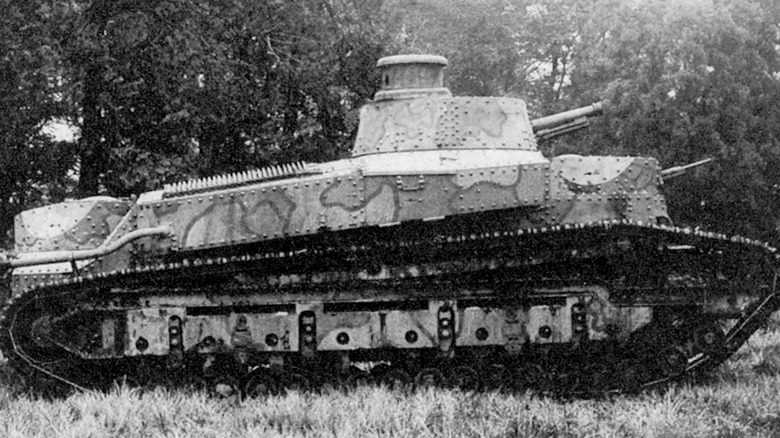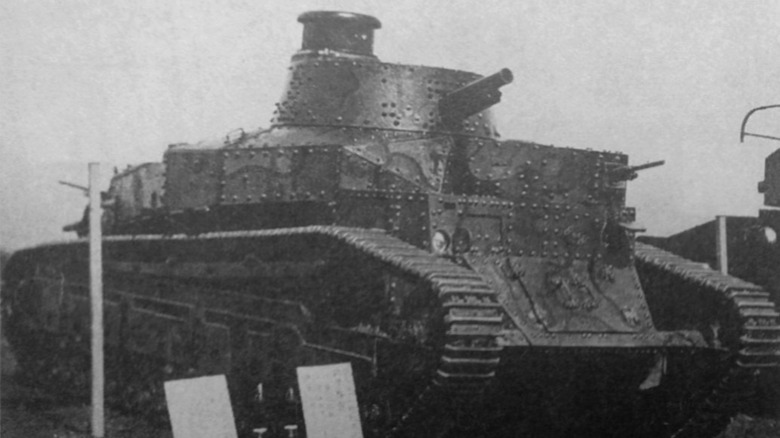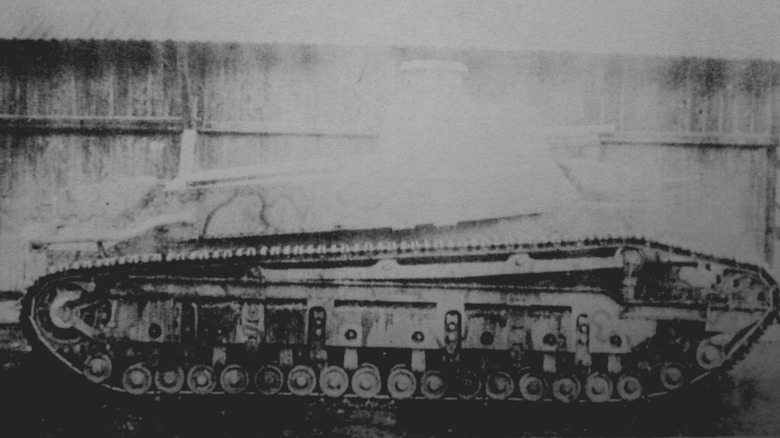The First Japanese Tank Ever Made: The History Of The Type 87 Chi-I
In the early 1900s, Japan gradually began modernizing its Imperial Army to keep up with the wartime advancements of other world powers like the United Kingdom, France, and Germany. One of the major goals of this modernization process was the adoption of tanks. The very first tank to set foot on Japanese soil was a British Mark.IV, imported directly from the UK to serve as an early study guide for budding Japanese military engineers.
Japan would continue importing tanks from other countries, mostly around Europe, up until 1925, when the order came down from the Imperial Army to establish its first tank battalion. The problem was that only a handful of tanks were in Japanese possession, and they were all second-hand leftovers from World War I. To prove it could handle modernization without foreign assistance, the Imperial Army commissioned a team of engineers to create the country's first wholly domestic tank, and they only had two years to do it. The result was the Type 87 Chi-I.
The first Japanese tank
The Type 87 Chi-I was developed according to a checklist of requirements sent down from the Imperial Army's technical department. These requirements included a weight range of 12-15 tons, enough space to carry a crew of 5, enough armor to withstand a 37mm shot, a 57mm caliber turret, a 120 horsepower engine, and a 43-degree climbing radius, among other factors.
The design process began in the summer of 1925 and ran for about a year. Then, in 1926, production officially started at the Osaka Artillery Factory, one of Japan's largest manufacturers of military-grade weaponry at the time. The factory needed to get a bit creative in the manufacturing process, as it didn't yet have dedicated tools for tank assembly. Some substitutions in the design needed to be made, such as using simple iron plates in lieu of actual armor plating. Despite some hiccups, the process continued smoothly, and eventually, the Type 87 was completed just a few months away from the Imperial Army's established deadline.
Did the Chi-I stick around?
Construction on the Chi-I was completed in 1927, right on schedule. Unfortunately, while it was a completed tank in the literal sense, it wasn't exactly battlefield-ready. For one thing, it was far too large and heavy, weighing in at a brutal 18 tons, far more than what was requested. This increased weight resulted from efforts to strengthen the stability of the component parts. The heavy weight meant the tank couldn't navigate a battlefield with the speed or dexterity the Imperial Army wanted.
The Type 87 was intended more as a proof of concept than a functional product. While it wasn't perfect, it was a functioning tank, which proved that Japan could manufacture its tanks domestically. Bolstered by this creation, the engineers iterated further on the Chi-I's concept, keeping what worked and removing what didn't. Two more years later, in 1929, they had the Type-89 Medium Tank, which would go on to become the main combat tank for the Imperial Army, seeing active deployment in conflicts with China. In the following years, Japan would continue developing new tank prototypes to bolster its military strength further.


